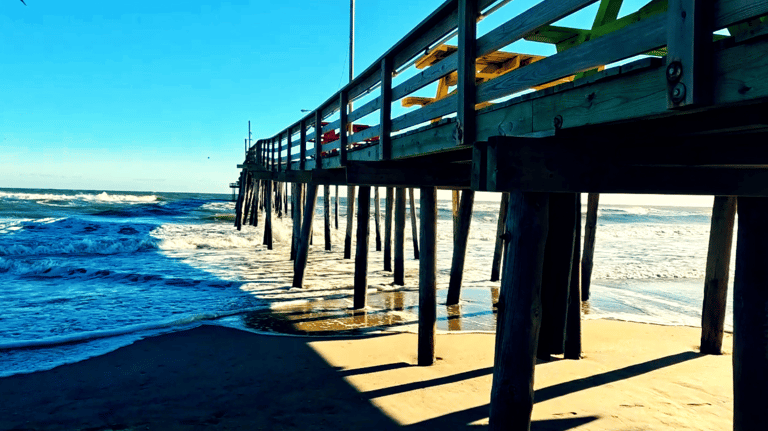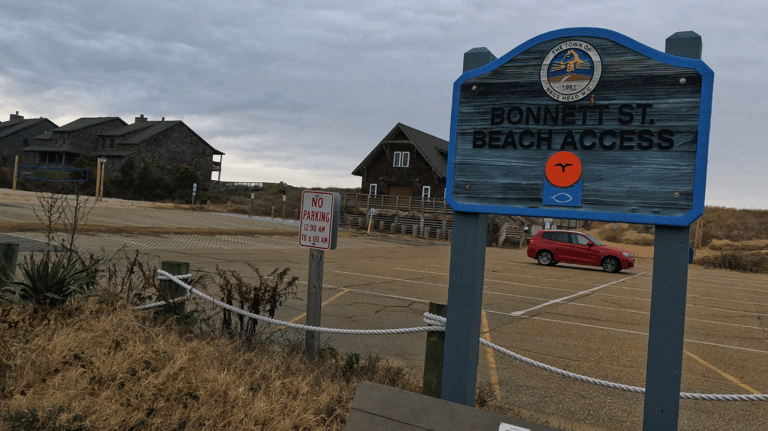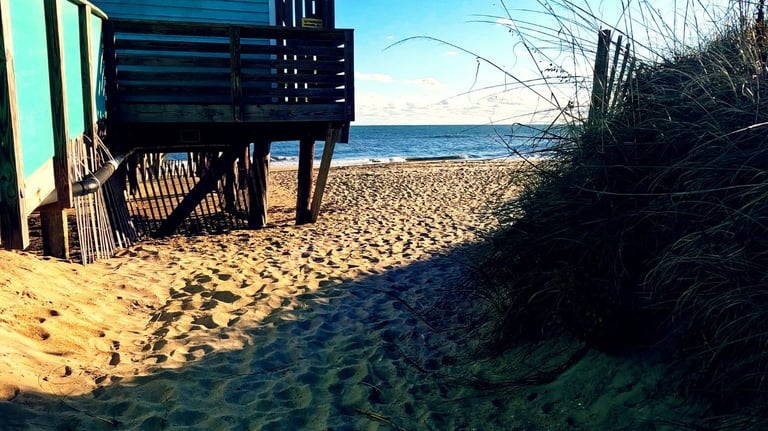


Discover Outer Banks History
The Outer Banks is rich in history, with numerous landmarks and historical sites that offer visitors a glimpse into its fascinating past
Fort Raleigh National Historic Site
Location: Roanoke Island, near Manteo, NC.
Significance: This site commemorates the first English settlement attempts in the New World (1585–1587), sponsored by Sir Walter Raleigh. It is also the birthplace of Virginia Dare, the first English child born in America. The mysterious disappearance of the 117 settlers, known as the "Lost Colony," remains unsolved.
Features:
The Lost Colony Outdoor Drama: Performed at the Waterside Theatre, this is the longest-running outdoor symphonic drama in the U.S., dramatizing the story of the Lost Colony.
Elizabethan Gardens: A meticulously recreated early English garden located within the park.
Visitor Center: Includes exhibits, artifacts, and a short film titled Roanoke, detailing the colony's history.
Walking Trails: Interpretive trails with markers about Native American and colonial history.
Additional History:
The site also highlights the Freedmen’s Colony established during the Civil War as a refuge for formerly enslaved people.
Hours: Grounds open 24/7; Visitor Center open 9 AM–5 PM.
Admission: Free.
Whalehead in Historic Corolla
Location: Corolla, NC, within Historic Corolla Park along Currituck Sound.
Significance: A beautifully restored 1920s-era Art Nouveau mansion built as a lavish hunting retreat by Edward Collings Knight Jr. and his wife Marie Louise. It is listed on the National Register of Historic Places.
Features:
Architecture and Décor: The mansion spans 21,000 square feet and features original Tiffany glass sconces, corduroy walls, cork flooring, and a Steinway piano.
Guided Tours:
Self-guided tours explore the mansion's history and luxurious design.
Specialty tours include "Behind-the-Scenes" tours focusing on servant life and preservation efforts, as well as hunting and maritime heritage tours.
Boat House tours showcase early electricity generation on-site.
Grounds: The property includes scenic views of Currituck Sound and offers picnic areas.
Hours: Open Monday–Friday, 10 AM–4 PM.
Admission: $10 for adults; discounts for students; free for children under 8.
Roanoke Island Festival Park
Location: Manteo, NC.
Significance: A living history site celebrating Roanoke Island's role in America's early colonization efforts.
Features:
Elizabeth II Ship Replica: A full-scale replica of a 16th-century sailing vessel used by English explorers. Visitors can climb aboard and interact with costumed interpreters.
Settlement Site Recreation: Features a reconstructed Native American village and colonial settlement with costumed interpreters demonstrating daily life activities like woodworking and cooking.
Adventure Museum: Interactive exhibits about Roanoke Island's history and maritime heritage.
Activities:
Hands-on experiences such as blacksmithing demonstrations or trying on period costumes.
Outdoor performances during summer months.
Graveyard of the Atlantic Museum
Location: Hatteras Village, NC.
Significance: Dedicated to preserving the maritime history of the Outer Banks, particularly its reputation as "The Graveyard of the Atlantic," where thousands of shipwrecks occurred due to dangerous shoals and storms.
Features:
Artifacts from shipwrecks, including items from Blackbeard's flagship Queen Anne’s Revenge.
Exhibits on piracy, naval warfare during WWII (including German U-boats), and lifesaving efforts by local surfmen.
Interactive displays about maritime navigation and diving expeditions to explore wrecks.
Freedmen’s Colony on Roanoke Island
Location: Near Fort Raleigh National Historic Site, Manteo, NC.
Significance: Established during the Civil War (1863), this colony provided refuge for over 3,500 formerly enslaved African Americans. It became a self-sufficient community with schools, churches, and homes until it disbanded in 1867.
Features:
Interpretive markers detailing its history as part of the National Underground Railroad Network to Freedom.
Portsmouth Village Historic District
Location: Portsmouth Island (accessible by ferry).
Significance: A preserved ghost town that was once a thriving port village in the mid-1800s before being abandoned due to shifting trade routes and hurricanes.
Features:
Restored buildings including a church, schoolhouse, general store, and post office.
Guided tours provide insights into life in an isolated coastal community.
Wright Brothers National Memorial
Location: Kill Devil Hills, NC.
Significance: Commemorates Orville and Wilbur Wright's first powered flight on December 17, 1903. This site marks one of humanity's greatest achievements in aviation history.
Features:
A granite monument atop Big Kill Devil Hill honoring the Wright Brothers' ingenuity.
Reconstructed hangars and a replica of their workshop where they built their planes.
Visitor Center with exhibits about their experiments and replicas of their gliders and flyers
Jockey’s Ridge State Park
One of the most iconic landmarks in the Outer Banks. It is renowned for its towering sand dunes, unique ecosystems, and recreational opportunities
Overview
Location: Nags Head, NC, at 300 W. Carolista Drive.
Size: Covers 427 acres and features the tallest active sand dune system on the East Coast, with dunes reaching heights of 80–100 feet57.
Admission: Free to enter, with no fees for parking or activities like hiking and kite flying46.
History
Formation: Scientists believe Jockey's Ridge began forming about 7,000 years ago due to sand pushed inland by storms and hurricanes. It is classified as a medano, a shifting hill of sand with little vegetation7.
Preservation Efforts: In the early 1970s, local resident Carolista Baum led efforts to save the dunes from development after bulldozing began. Her activism resulted in the establishment of Jockey’s Ridge State Park in 19757.
Cultural Significance: Historically, mariners used the ridge as a landmark for navigation during coastal exploration in the 16th century7.
Ecosystems
Dune System:
The dunes are constantly shifting due to strong winds that move them 1–6 feet southwest annually.
The desert-like environment supports little vegetation or animal life7.
Maritime Forest:
Located west of the dunes, it stabilizes the sand and houses diverse flora such as live oaks, hickory trees, and loblolly pines.
Fauna includes gray foxes, six-lined racerunners (lizards), tiger beetles, and nocturnal animals like opossums7.
Roanoke Sound Estuary:
Visitor Center
Recently expanded to 6,200 square feet, the visitor center includes:
Activities
Hiking:
Hang Gliding:
Kite Flying:
Sandboarding:
Sliding down the dunes on a board is a fun activity similar to snowboarding but requires permits from park staff4.
Sunset Viewing:
The park offers panoramic views stretching from the Atlantic Ocean to Roanoke Sound, making it a popular spot for sunsets8.
Picnicking:
Accessibility Options:
Seasonal Programs
Year-round nature programs include guided hikes and educational talks about dune ecology and wildlife.
Special events such as kite festivals are held seasonally; check with park staff for schedules13.
Practical Information
Exploring the Outer Banks was unforgettable! The lighthouses, beautiful beaches, and thrilling water sports made our trip truly special. Thanks Real Outer Banks for helping me map out my entire vacation!
Emily R.

★★★★★













